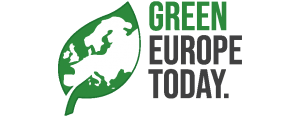- For the energy transition to run smoothly, investments in bi-directional energy transmission in the grid of the future are necessary.
- Distribution System Operators (DSOs) play a key role in the process of leading the way towards zero net emissions.
- Energy transformation requires network data management based on secure digital technologies and advanced solutions for major event mitigation, network flexibility and active management, and advanced operational efficiency.
According to Schneider Electric, a leader in the digital transformation of energy management and automation, and the most sustainable corporation in the world in 2021 , it is primarily electricity that gives the best chance for efficient decarbonization. All this thanks to a combination of renewable energy sources and digital software solutions. Smart bi-directional networks – the networks of the future – are the only way to enable the energy transition, helping the world to cut CO2 emissions in half by 2030 by removing 10Gt of carbon dioxide annually and keeping climate change at 1.5 degrees Celsius. thanks to the ability to combine multiple resources of distributed generation, decentralized renewable energy in a safe, reliable, resilient and efficient manner, while reducing losses in transmission and distribution of energy.
In response to the increase in the frequency of sudden weather events related to climate change, Schneider Electric proposes innovative software solutions aimed at increasing the flexibility of the power grid thanks to distributed and clean renewable energy (Electricity 4.0), maximizing the reliability and resilience and improving the operational efficiency of grid management. Decentralized power generation is the future, and a joint assessment by Schneider Electric and Bloomberg New Energy Finance (BNEF) indicates that solar power is a major missed opportunity – with the potential to reach another 167 million households and 23 million companies worldwide that may have their own clean energy sources by 2050. These deployments have the potential to bring significant decarbonisation benefits.
Paving the way towards a new electricity era
All efforts to efficiently decarbonise rely on energy companies (DSOs) that manage the underlying infrastructure for the energy transition. Only a data-driven web review and analysis makes a prosumer revolution possible. It is the ability of consumers and businesses to generate their own renewable energy from solar and other distributed generation sources, and the ability to sell surpluses back to the grid, that can help decarbonise the largest CO2 emitters, including buildings, homes and car transport. With EcoStruxure Grid software and services, Schneider Electric aims to equip distribution companies with information gathering, data management and advanced analytics solutions to digitally accelerate the tedious work of decarbonization.
– The next ten years will be referred to as the “Electricity Decade”, with the promise of a low-carbon future powered by reliable and swirl-resistant smart and clean renewable electricity that we call Electricity 4.0. However, this is only possible if we invest in a two-way smart grid infrastructure that is able to meet the growing demand for clean electricity and the growing supply of decentralized renewable generation delivering energy to the grid – said Frederic Godemel, Executive Vice President, Energy Systems and Services, Schneider Electric – Today, DSOs, or Electricity Distribution System Operators, are the true center of a successful energy transition. We must provide them with the resources and incentive to invest in digital networking solutions.
Data-driven network analysis has the potential to unblock the prosumer revolution necessary to decarbonise the economy and society, as well as provide flexibility on the demand side of the DSO. Not only the grid itself, but everything it powers, including buildings, industry and electromobility.
Future networks made possible by digitization and software
Schneider Electric announces new solutions to help grid operators minimize the risk of downtime, manage supply and demand flexibility, and improve operational and energy efficiency:
Mitigating the effects of major incidents : The latest version of the EcoStruxure ™ ADMS system will provide enterprises with new opportunities to cope with the effects of climate change that can have far-reaching consequences – such as reduced reliability, higher costs and more frequent power outages. The EcoStruxure ™ ADMS system offers more tools to reduce fault response times and the ability to anticipate events and proactively ensure consistent power quality through greater network automation. As a result, the utility company system can be better prepared to mitigate the effects of major incidents, ensuring the safety of customers and communities while maintaining high quality and reliability of supply.
Flexible and Active Network Management : EcoStruxure DERMS provides active network management with the ability to identify and coordinate upper and lower operating limits for Distributed Energy Resources (DER) for greater network flexibility. The latest version of the EcoStruxure ™ DERMS system analyzes whether the desired DER output schedule or export-import limits are up to date with the network’s capabilities. The DERMS checks the planned operation of the DERs with regard to thermal limits of network sections and transformers, allowable reverse flow and under / overvoltage limitations. If a violation is detected, the application creates a new DER power schedule or export / import limits to mitigate possible network problems to maintain its ability to provide good quality and service to all customers.
Advanced operational performance
The EcoStruxure power automation system facilitates operation, maintenance and ensures greater efficiency of operational and service programs, because it is a data collector based on the technical condition of devices operating in the network infrastructure.
The new solutions are part of an integrated portfolio of Schneider Electric software and services that help grid operators manage the grid lifecycle by digitizing, optimizing, and automating to ensure flexibility, efficiency, resilience, and risk reduction. Furthermore, Schneider Electric recently expanded its switchgear portfolio with RM AirSeT ™, a solution that decarbonises the power grid and contributes to the global fight against climate change, by replacing SF6 with a Grids of the Future with clean air and vacuum circuit breaker.
An exceptional item for delivering value
Earlier this year, Schneider Electric supplemented its software portfolio for power systems with investments in ETAP and OSIsoft. These vendor-independent modeling, design, real-time predictive simulation and operation solutions enable unique cloud-based design and safe operation of mission-critical energy systems. The new software ensures digitization of the entire life cycle and increased efficiency, sustainability and reliability for a wider audience and customers.
These solutions aim to support better integration of renewables, microgrids, fuel cells and battery energy storage technologies through digital enhancement of complex mission-critical systems.
First Published: December 7, 2021
Source: Schneider Electric Press Office










